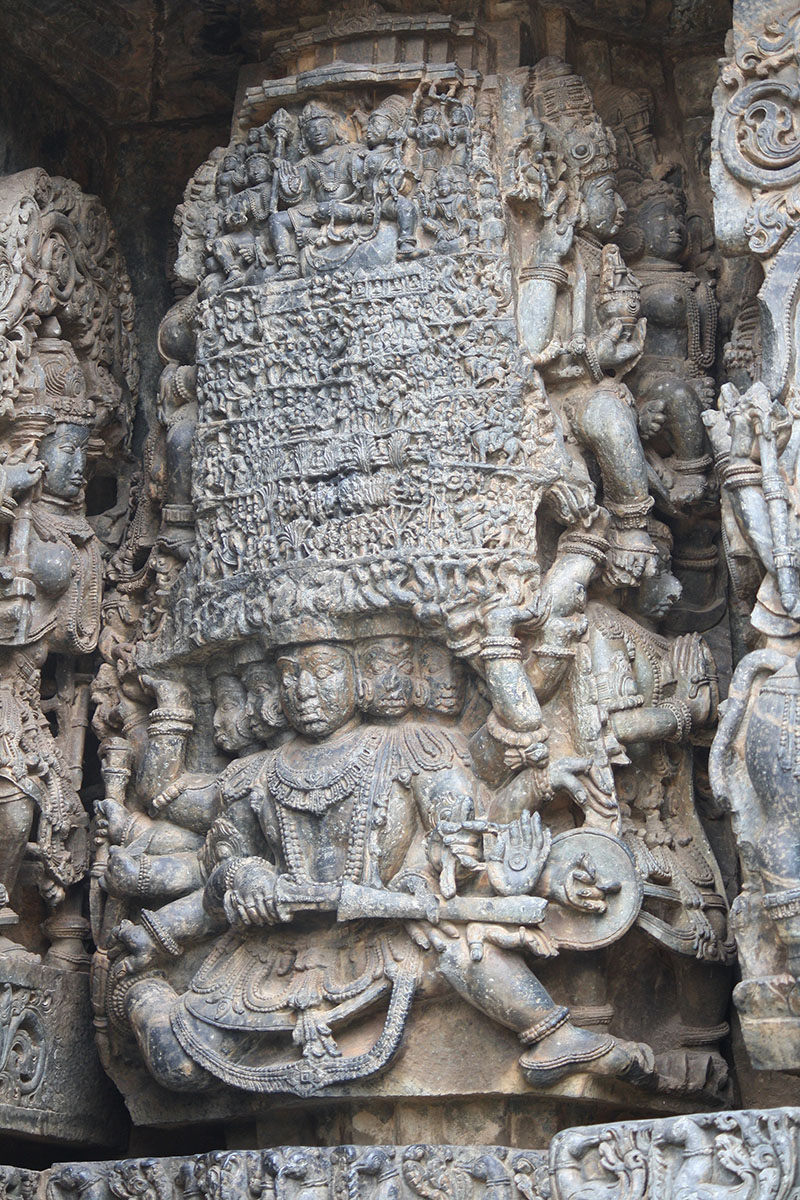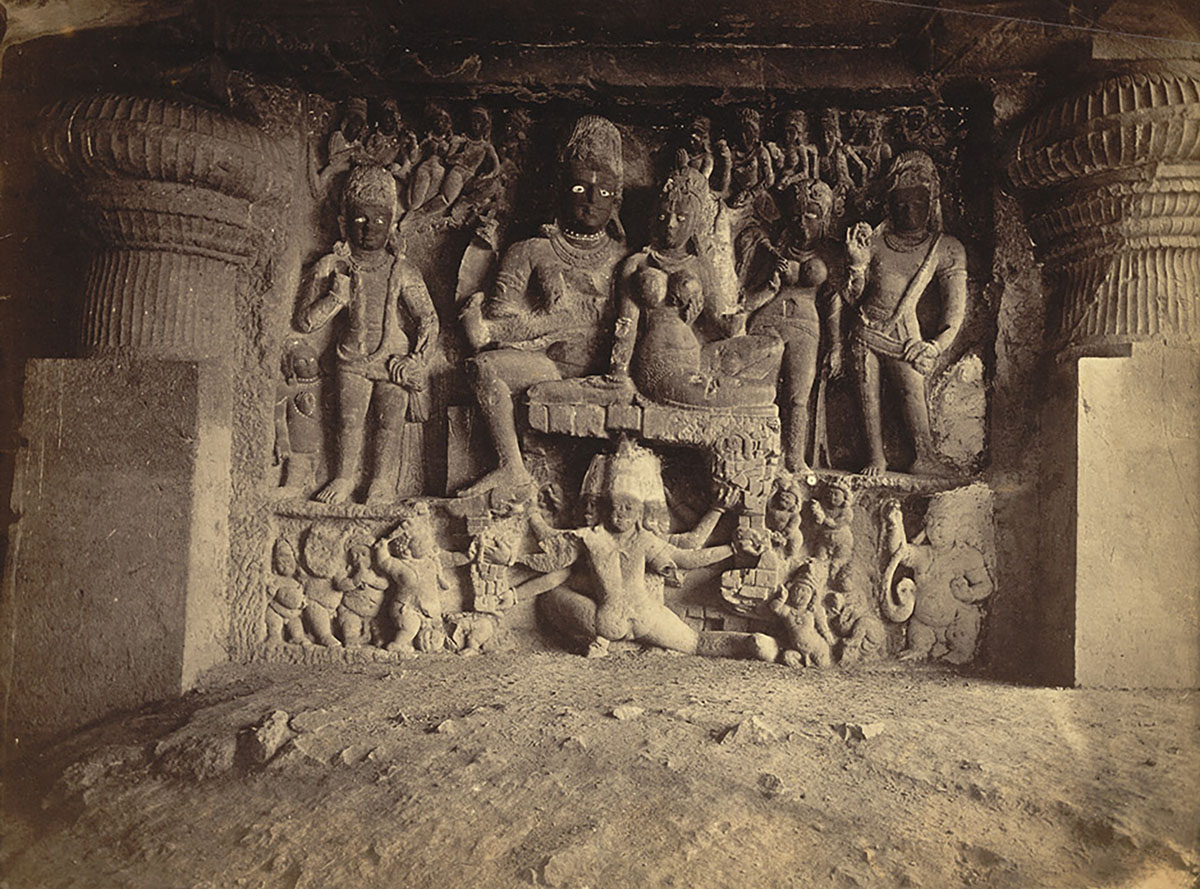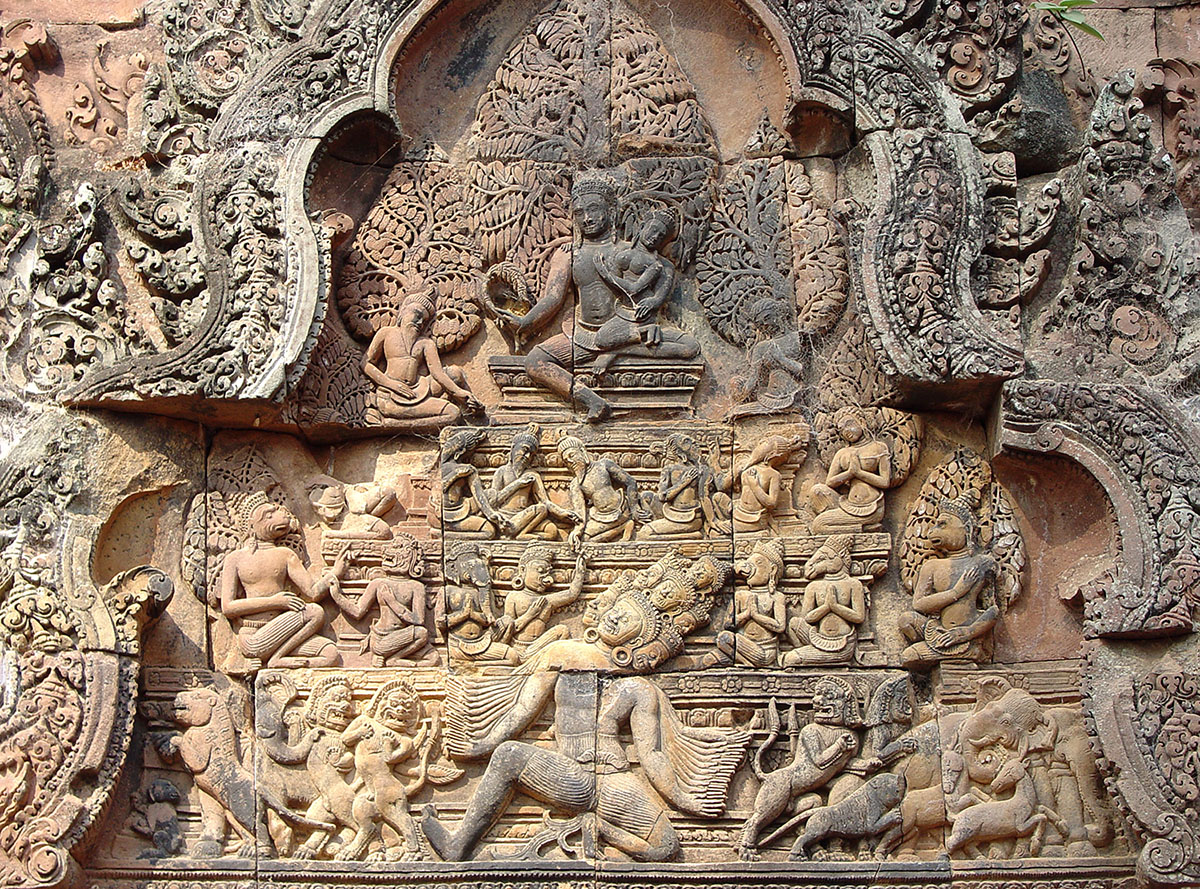Visual depictions of Shiva seated atop Mount Kailasha with his consort Parvati, as the demon king Ravana attempts to lift it, Ravananugrahamurti images were frequently depicted in temple sculptures in medieval India, and in manuscript paintings in the early modern period. The earliest versions of this story are found in the Uttara Kanda, the seventh book of Valmiki’s Ramayana, and in the Vana Parvan or the third chapter of the Mahabharata.
According to these epics, Ravana was proceeding towards Kailasha on the flying Pushpaka Vimana, but the vehicle stopped moving as it neared the mountain. The enraged demon was warned by Nandi to not proceed further, as Shiva and Parvati were sporting on the mountain. Ravana, mocking Nandi, is then believed to have uprooted Mount Kailasha and lifted it in his arms, frightening Parvati, who clung onto Shiva. The god responded by pressing his foot down onto the mountain, crushing Ravana’s arms and pinning him in place. The defeated demon sang praises to Shiva for over a thousand years, after which the god eventually released him, bestowing him with blessings and a magical sword.
The iconography of Ravananugrahamurti images derive directly from the story. They generally consist of two registers; the lower contains Ravana depicted with ten heads, lifting the mountain with multiple arms. His front two arms may be depicted carrying a sword, while his expression or posture may convey the pain or difficulty he is in. Shiva and Parvati are shown in the upper register, seated on the right and left sides respectively. Shiva is usually depicted with a calm expression, while Parvati may be shown seated next to or on the lap of Shiva, with her arms thrown around him to express her fear at the shaking of the mountain. They may be seated on a lotus-shaped seat. They are often accompanied by Ganesha, Kartikeya, and Nandi. Mount Kailasha is depicted either directly through a pile of tapered rocks, or alluded to through the presence of ganas.
Sculptural representations of Ravananugrahamurti appear frequently in the historical record from the eighth century CE, most commonly in Shiva temples built with the patronage of royal dynasties such as the Pallavas of Kanchipuram, the Chalukyas, Rashtrakutas and Hoysalas of the Deccan, and the Kalachuri and Pratihara dynasties of central India. Scholars have suggested that these depictions of Shiva’s effortless victory over Ravana, and the mercy he subsequently showed the demon, were incorporated into temples as political messages; the sculptures may have been intended to signify the might of a royal patron, and his mercy towards defeated rivals. Alternatively, the king may have been identified with Ravana, whose might was sufficient to shake even Mount Kailasha to its foundations.
A large, albeit damaged, panel depicting Ravananugrahamurti is seen at the east entrance to the Elephanta Caves in Maharashtra, dated to about the seventh century CE. Shiva is shown holding onto his attendants by their hair as Ravana shakes the mountain. The scene is also prominently featured in the rock-cut cave temples of Ellora, Maharashtra, including the mid-eighth century Cave 15 or Dashavatara cave, the late eighth-century Cave 16 or Kailasanatha temple, and Cave 29, the Dhumar Lena. Ravananugrahamurti images from Ellora have been discussed for their highly naturalistic portrayals of the episode. Parvati is depicted clinging in fear to Shiva, and Ravana is portrayed with considerable bodily discomfiture, doubled down in the relief from Cave 15 and completely kneeling in Cave 16.









